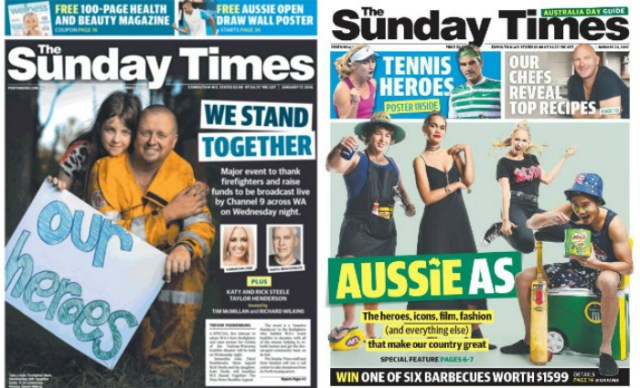
You’ve just heard back about that last quote. You were beaten by 20%. It would be easy to put your head in your hands and believe that print buying had become solely a price game.
Is it? Not according to the buyers ProPrint spoke to, who encompass advertising agencies, design houses, financial services, public sector, publishing and, yes, even print management.
Tony Di Stefano has extensive experience as a print buyer for large corporations. He handled one of the country’s largest-ever one-off accounts: the $200m Sydney Olympics spend. He says meeting a price is always an important factor in the interchange between customer and supplier, but there are many others.
“Price influences the ultimate decision, but only when I’m sure that the suppliers I am comparing are equally capable of delivering on time and to the accepted level of quality,” says Di Stefano.
The production manager at a very large financial services company, speaking on condition of anonymity, tells ProPrint that while price obviously plays its role in the procurement process, other factors contribute as much in the final decision. The company’s overarching priority is consistency of quality and branding in all its communications collateral.
“We are not always guided by price, as our role in Group Marketing is to ensure that all goods we print are to a high standard of quality. Other things that are important are the level of ease when dealing with vendors, flexibility in turnaround times, environmental standards, level of professionalism and active account management.”
Marek Weiss is design and print production manager at The Co-op Bookshop, which bills itself as the largest provider of educational and professional resources in Australia, with over 40 branches. He says said simply that “other factors drive the print decision, before price is considered”.
Kris Asprey has extensive experience as a production manager for ad agencies including Leo Burnett and Saatchi & Saatchi. He says any print buying decision comes down to thee factors. “Obviously it is relationships, quality and cost – all in equal value”.
Asprey accepts that buying based on price “has become more prevalent” in our post-GFC economy. For an ad agency, that starts with their clients.
“We need to be ensuring that clients get the most bang for their buck but in the same context, that work is of the best quality,” he says.
In regards to relationships, Asprey adds: “It is about going over and above on some jobs when we need to, and being flexible.”
So taking it as given that price needs to stack up against some key issues – quality, relationships and timeliness being the main ones – what else is important?
Judith Berghan, manager of the Publishing Service at Sydney University, points to a set of criteria that guides its procurement services.
“Suppliers have to meet our accreditation standards before we use them on a regular basis,” she says.
“Accreditation factors include sustainability, quality, ability to meet deadlines, quote turnaround time and customer relations. An evolving accreditation requirement is e-commerce functionality. We find this is increasingly a point of difference that delivers increased efficiency value. After suppliers meet these specifications, we then also consider price,” says Berghan.
Print management companies have been accused on many occasions of driving an agenda of price reduction, but it is also fair to say they understand better than most the complex matrix of requirements behind a procurement decision.
Clive Steele is general manager of Stream Solutions, having replaced company founder Andrew Price a few months ago. He brings a perspective that sits neatly between print provider
and print procurer.
“Print buyers certainly aren’t just driven by price,” says Steele. “They probably have five or six key considerations that they’re looking for. They look for innovation, new products, they look for timeliness and responsiveness.”
The goalposts are constantly getting pushed back, as technology changes and customers face an ever-growing array of communication platforms, of which print is just one part.
Steele suggests that cross-media skills are now critical for longevity. “There are so many channels that customers have available to them to communicate with their customers, and it’s increasing all the time. That’s what new print buyers are more proficient at and more aware of – everything from social media to local area marketing, giving local area marketers [like local retail stores] the opportunity to customise marketing material from a template so they can compete locally. Those sorts of initiatives are very important.”
So much so that Stream Solutions has undergone substantial changes in its business model to accommodate them, says Steele.
“We certainly have had to change our model. Our model now is not tied to the value of print, because the value of print is falling anyway. We’re looking at total communication solutions for our customers, across all media and across all communication channels. That’s fundamental to them now,” he adds.
Cross-platform, multichannel skills are nice-to-haves, but the crucial tools are more traditional. If larger buyers choose to go direct to the manufacturer – rather than use a print manager – they increasingly expect a one-stop shop.
Our anonymous financial print buyer says: “It’s important to ensure that your print partner has the end-to-end process covered – that is, print, online capabilities such as ordering systems and online real time reports, warehouse and despatch.
“It’s also good if your print partner has a particular level of buying power, good capacity to manage large volumes of print work across multiple clients, and contact with specialist suppliers, such as die cutting, celloglazing and special varnish treatments, and foiling.”
This may be a demanding set of eligibility criteria, but many printers can accommodate them. The stumbling block for many, according to some customers, is that they undermine their capabilities and skill sets by failing to market them properly.
Berghan points to the reticence of many printers to actively promote their services, effectively shutting themselves out of opportunities.
“I find printers don’t always sell their product range and capability very well,” she says. “They tend to focus on the immediate job and fail to communicate effectively the total suite of services they can offer. Sometimes this is difficult because they actually subcontract some of their products and services out, and so pricing can be prohibitive.
“In terms of capability, I find, especially with digital colour printing, very few printers use and promote the full capability of their equipment. For example, printing on varied stock from plastic through to traditional white bond, and printing the full colour range, including the gloss coats now available, foils and fluoro colours. It would be wonderful to be able to promote this capability on to our clients,” she adds.
In other words, printers must open their own channels of communication to explain to clients and prospects alike how they can be more than just a supplier and achieve that mythical ‘partnership’ status.
There should be also be a shared vision of long-term goals. “To become a trusted partner, printers need to invest more time in discovering and understanding my clients’ varying requirements,” says Berghan.
“They then need to show commitment to growing my business. By commitment
I mean allocating resources, both human and material, that will lead either directly or indirectly to the growth of revenue for both parties. I also believe that, to really add value as a partner, today’s printer must be committed to the research and development of e-communications and online production MSR technology, and this must be included as part of their product range.”
Strong supplier-buyer partnerships are borne out over time. Price, quality and timeliness are important for any given job, but the ability to hit the mark time and time again are what creates the loyal bond, buyers tell ProPrint. Sometimes this is done on a handshake and mutual respect, although these days it is often through service-level agreements (SLAs) and key performance indicators (KPIs).
The anonymous financial buyer says: “The benefits we receive from our print partner go way beyond just the price and turnaround. We have a set of KPIs that are used to measure the success of the relationship, and our original contract terms. We have quarterly reviews where we meet with senior management, both from my company and the print partner, and review the raw data from our KPIs. We look to identify and address any key issues over the period, and figure out resolutions. We, as a partnership, are always looking to implement efficiencies and streamline processes where appropriate.”
The printers supplying this corporate customer have succeeded in developing a solid partnership that has effectively “locked in” the client – a distinct advantage in that marketplace. The rewards are obvious, as the print buyer explained.
“We have been working with the one printer for over six years now, and the same account manager for the duration. They have become extremely familiar with our brand, our regular print jobs and our peak periods during the year.
“We have found the consistency in service and print production outputs to be well above standard, and this has provided a great deal of comfort, for us in the production team and to our internal clients, to know that we are working with a partner that really understands us and the way our business works,” says the buyer.
“I think that having a trusted print partner really relies on a few key factors:
a good working relationship with the account manager and sales support staff,
a high attention to detail and thorough follow-up, and an understanding of the client’s business objectives.”
The opposite is true for printers trying to break into a new customer. Most senior production managers and print buyers already have a stable of trusted suppliers.
Danny Hogg is lead account manager at Clemenger Art Studio. He currently works on the company’s NAB account, which is print managed by Ergo Asia.
Hogg has his go-to list of other suppliers when buying direct. This list has been compiled throughout his career. He appreciates it when suppliers go the extra mile in terms of offering advice and specialist knowledge.
“I think the relationship is very much why you tend to use the same people. You can get a quote from someone you have never used and that could be a competitive quote, but will they invest the extra time giving their knowledge base on what can be a one-off job? A lot of printers out there are great, but when I go to one of my great printers and say ‘I have a problem with this’ or want to do something different, they will say ‘try this’ or ‘that won’t work’. It is give and take,” says Hogg.
Asprey says: “When contacted by new printers, I am always interested in looking for their point of difference and what tools, resources and experience they can bring to the table. Technology is leading the way across all mediums and transparency is becoming more prevalent. There are different expectations that our clients and suppliers want. It becomes a balancing act for print buyers between finding a solution that encompasses both parties’ goals.”
One recurring theme is that clients appreciate printers who act as mentors, whether in new processes or finishes, or in ways to cut costs or improve the production flow. Can printers then be teachers to their customers? It is an especially relevant question as the highly skilled ‘print buyer’ becomes a thing of the past and more work is spec’d out by inexperienced or time-poor people, perhaps within an organisation’s marketing department.
Procurement specialist Di Stefano says he has “engaged suppliers on the basis that the advice and direction they have provided was both proactive and ‘game changing’ in providing me with a significant competitive advantage”.
Asprey says that he isn’t looking for tutelage, having earned his stripes in pre-press roles, including a period working on FMCG work a local gravure printer. But some buyers are less experienced. “Everyone is losing focus on craft and more on delivering a job”. So it can fall to printers to educate their customers on the right way to procure work. It’s unlikely the printer can invoice for this extra effort, but hopefully it will lead to a healthy long-term relationship.
It can work in printers’ favour if they grasp the opportunity to offer new ideas or better methods of print production. Indeed, some print buyers are keen to receive advice and recommendations on how print projects can be undertaken, and sometimes enhanced. This approach can lead to a tighter relationship, or partnership, that benefits both sides of
the transaction.
The unnamed corporate print buyer says: “A majority of our work is quite standard, style-guided print work that doesn’t deviate from a list of standard specifications. When required, we will be offered advice from our print partners on particular finishes for a job and the best way to achieve the result we desire.”
Going the extra mile, helping out in a pinch – it’s not rocket science. These have been the hallmarks of excellent client management for as long as commerce existed. But what makes it difficult is that the sands keep shifting. Professional procurement in the shape of print management has removed the relationships from a lot of these transactions. Not all, of course – for work where quality is paramount, such as the creative output of an advertising agency, it seems that strong relationships between supplier and printer are still well regarded.
Clemenger’s Hogg says: “Price does come into it, but you also don’t have the time or inclination to shop until you find the lowest price. You know the printers you use are competitive and put out a good product.”
But in the corporate world or for the kind of commodity work that makes up a huge percentage of total print volumes, things have changed. The print buying function is under greater scrutiny in terms of managing costs. This explains why management specialists have found a profitable niche in print procurement.
“If you go back 10 years or so, many customers would have historically dealt with hundreds of suppliers,” said Stream’s Steele. “That’s a terribly inefficient and difficult thing to manage, and almost impossible to make process improvements in time, efficiency and labour allocated to manage it.
“What we do is integrate that whole supply chain so they have one party which takes responsibility for the delivering the services across the whole supply chain. That gives them a single point of accountability, of reporting, single responsibility for KPI delivery, and it allows us to drive efficiencies and cost savings that individual suppliers can’t bring by themselves.
“So I don’t think it’s to do with what printers are doing, or not doing. It just reflects the changes in the way business is done, and the efficiencies of our model, and what it has brought to this area,” he adds.
Comment below to have your say on this story.
If you have a news story or tip-off, get in touch at editorial@sprinter.com.au.
Sign up to the Sprinter newsletter


